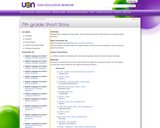
Students will be reading and writing myths. They will follow the structure of short stories and eventually publish their work.
- Subject:
- Fine Arts
- Material Type:
- Lesson Plan
- Unit of Study
- Provider:
- Utah Education Network
- Date Added:
- 11/01/2017

Students will be reading and writing myths. They will follow the structure of short stories and eventually publish their work.

This powerpoint contains guided reading questions as students read Jack London's Call of the Wild. It provides geographical background, images, and discussion questions to guide students in their reading.
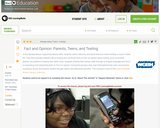
This lesson requires student to evaluate various types of texts including video, visuals, etc. and to communicate their learning in multiple ways (discussions and writing). Large emphasis on utlizing mutliple reading strategies.

In this 8 eight-week module, students explore the experiences of people of Southern Sudan during and after the Second Sudanese Civil War. They build proficiency in using textual evidence to support ideas in their writing, both in shorter responses and in an extended essay. In Unit 1, students begin the novel A Long Walk to Water (720L) by Linda Sue Park. Students will read closely to practice citing evidence and drawing inferences from this compelling text as they begin to analyze and contrast the points of view of the two central characters, Salva and Nya. They also will read informational text to gather evidence on the perspectives of the Dinka and Nuer tribes of Southern Sudan. In Unit 2, students will read the remainder of the novel, focusing on the commonalities between Salva and Nya in relation to the novel’s theme: how individuals survive in challenging environments. (The main characters’ journeys are fraught with challenges imposed by the environment, including the lack of safe drinking water, threats posed by animals, and the constant scarcity of food. They are also challenged by political and social environments.). As in Unit 1, students will read this literature closely alongside complex informational texts (focusing on background on Sudan and factual accounts of the experiences of refugees from the Second Sudanese Civil War). Unit 2 culminates with a literary analysis essay about the theme of survival. Unit 3 brings students back to a deep exploration of character and point of view: students will combine their research about Sudan with specific quotes from A Long Walk to Water as they craft a two-voice poem, comparing and contrasting the points of view of the two main characters, Salva and Nya,. The two-voice poem gives students an opportunity to use both their analysis of the characters and theme in the novel and their research about the experiences of the people of Southern Sudan during the Second Sudanese Civil War.
Find the rest of the EngageNY ELA resources at https://archive.org/details/engageny-ela-archive .
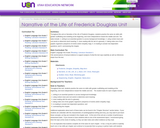
Throughout this unit on Narrative of the Life of Frederick Douglass, students practice the same six skills with greater scaffolding and modeling at the beginning, and more independence toward the middle and end. The tasks include: 1. writing to an essential question to access background knowledge; 2. using context clues and root words to determine word meaning; 3. close reading with the aid of a glossary; 4. taking notes one of two graphic organizers (sequence of events and/or empathy map); 5. re-reading to answer text dependent questions; and 6. summarizing the chapter.
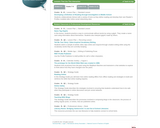
Students can use the Profile Publisher to mock up or draft online social networking profiles, yearbook profiles, and newspaper or magazine profiles for themselves, other real people (including historical figures), or fictional characters. The tool could also be used for profiles of nonhuman living creatures, inanimate objects or abstract concepts (e.g., profile of an amoeba, an historical monument, or friendship).
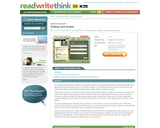
The Trading Card tool gives students an alternative way to demonstrate their literacy knowledge and skill when writing about popular culture texts or real world examples. This interactive allows students to create their own trading card about a real or fictional person, place, object, event, or abstract concept.

Remix this template to upload your WISELearn Grant lesson and unit plans into WISELearn

Remix this template to upload your WISELearn Grant lesson and unit plans into WISELearn

Remix this template to upload your WISELearn Grant lesson and unit plans into WISELearn

This lesson was created to go with the book, Stealing Indians by John Smelcer. It is a book that closely aligns with what life was really like for Indian children after being sent to boarding schools against their will.

Remix this template to upload your WISELearn Grant lesson and unit plans into WISELearn